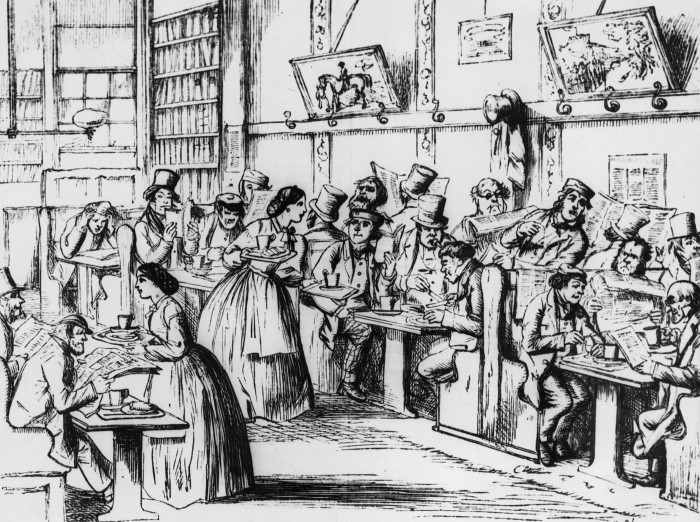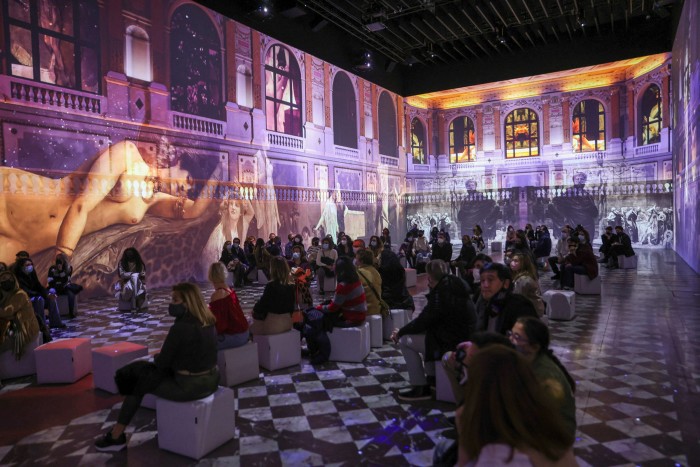
The writer is the FT’s architecture and design critic
In 1748, Giambattista Nolli published a map of Rome. It was like nothing that had been seen before.
It did not just depict the city as the spaces between the solid black forms of buildings but showed the real complexity of the metropolis at ground level. The map detailed the public and accessible interiors and courtyards, the churches and monastery gardens, the semi-public courts of palaces, the arcaded forecourts of public offices, the access alleys and covered lanes. It was the city as experienced on foot by an inhabitant familiar with a far more complex and nuanced use of space, both public and private, than the usual neutral bird’s eye view.
In Northern Europe such a map might have looked very similar; the interiors of buildings, guild halls, markets, churches, exchanges, alleys and arcades. This was a permeable city in which public and private, work and home were less delineated, in which shop and innkeepers lived above their premises, in which trading might be done in a church (think of those Dutch paintings of serious men discussing business in vast gothic naves), a courtyard or a coffee shop.
The royal court too was a more public and accessible place with courtiers and citizens gathering to be seen and to be in proximity to power. London’s 17th-century stockbrokers met in coffee shops such as Jonathan’s in Change Alley (having been barred from the Stock Exchange due to their antisocial behaviour). The world’s largest insurance marketplace Lloyd’s of London is, famously, named after the coffee shop in which it was founded.
Before the invention of the office in the late 19th century, the whole city was a workplace. The question is whether that idea of the city itself as a dispersed place of work might return.
We have all worked in cafés, in airports, on trains, planes and, of course, at home. We have all made calls in the street or gossiped over drinks outside a pub. As the world of work is transformed post-pandemic, how might the city itself adapt?
The first response to a less tethered workforce and the cult of the start-up was the co-working space, which emerged in San Francisco in the mid-2000s and took a knock through the spectacular implosion of office space provider WeWork in 2019. Yet, despite the fussball and free coffee, it remains just another office. For more than a century the office has been a single building, a concentration of workers, first constructed by corporations as an efficient condenser and a marker of power and presence in the city and then, increasingly, as an asset class.
Offices around the world all look the same because overseas investors can understand what they are buying more easily — square footage not culture, workspace not architecture. Peter Wynne Rees, the former City of London Corporation’s chief planning officer, says he spent his time there “trying to put the place back into workplace”. “When I started [in the 1980s] the City would die after 5.30pm. Now we have banking halls turned into nightclubs. We need to understand that these people gossiping outside pubs or around Lloyd’s are also working.”

Richard Sennett, professor of sociology at the London School of Economics, agrees. “The French go to the café at lunchtime and after work. But they are still working. That is part of the working day. The challenge for cities is how to make them more sociable after the isolation of the pandemic.”
City centres are undergoing a moment of radical change. Physical stores have been destabilised by online retail, offices remain half-empty as employees choose to work from home. Public buildings, the libraries, police stations, swimming baths, banks, town halls, churches and community centres, are increasingly being turned into hotels or flats as councils respond to government austerity.
It may seem the infrastructure of public interiors is collapsing, however a whole new layer of potential has emerged. The shuttered department stores, restaurants and bars, the emptying malls and fashion outlets are there to be exploited. Beyond these is the network of underused but huge corporate entrance lobbies, representational spaces occupied by only a security guard. If the problem is security, then those checks or barriers could simply be hitched up a level or transferred to the lifts. These spaces could be used for working, for retail, for activity. This reimagination of something between the lobby and the library could constitute the Nolli courtyards of the contemporary city.
If corporations, which often choose their headquarters’ location to reduce tax liabilities, want to build on the attraction of their urban office locations for loyalty and quality of life for their employees, there is a trade off. Taxpayer-funded infrastructure and culture might demand a payback in the opening up of corporate space to the city. The hotel lobby is already understood as a kind of public space, the corporate lobby should belong to that same world, a place open to the functions of the city, porous and welcoming. It is no accident that the vast lobbying industry has that name, lobbies are where encounters occur.
Jinhua Zhao, associate professor of city and transportation planning at MIT points to two Boston buildings. There is the Hancock Tower, a classic office block, which he describes as a “wonderful building designed by IM Pei, it even has its own plaza. But it feels very cold, people don’t feel part of it.” Then there is the Prudential Building: “The top is offices but the first and second floors are commercial, showrooms and a foodcourt. It’s popular but it could have been just another corporate lobby.’
Julia Hobsbawm’s new book The Nowhere Office explores the way in which work is changing and agrees we may well see corporate lobbies repurposed. “They have remained stuck in post-9/11 security. There is a physical and cultural barrier to entry which is at odds with the desire to meet and hang out.”
A more permeable city creates more places to work, the city itself understood as a web of space adaptable to an individual’s preferred patterns. Spies used to meet on park benches, why not companies? “We certainly need spaces where people can work outdoors,” Rees says. “A city needs a work ambience but not to be turned into a leisure destination, we don’t need more tourists, we need more people using the city for work.”
Can we create outdoor space amenable to meetings? With seating placed to allow easier contact, perhaps even tables? Fresh air, it turns out, is good for avoiding Covid. The appearance of ad hoc parklets in cities, with seating and greenery (often in place of parking spaces) provides a venue to work for a while.
Rather than the precarity of hot-desking, workers might be encouraged to engage with the city, to have a meeting in a museum café, even to see an exhibition in work time? “You might ask ‘what do people use libraries for in the 21st century’. For books, or for work?” says Zhao, who has been studying the “third space” concept.
This is not about the colonisation of civic space by corporations but rather that using these unexpected urban sites makes a more equitable city, with executives sharing spaces with all citizens rather than confining themselves to their corner offices and cars.
There are precedents. Somerset House in London was begun in 1776 as a vast public building for the Royal Navy and the newly-emerging public offices overseeing everything from the lottery to Hackney cabs and hawkers’ licences. It embraced the Royal Academy and Royal Societies, blending culture and science with tax and military spending. By the late 20th century its vast courtyard, every bit as grand as those of the great palaces, was being used as a car park for the Inland Revenue. Now Somerset House has been reborn as a palace of culture, home to a revivified Courtauld Institute, blockbuster exhibitions and art fairs, public events and a range of subsidised studios for more than 300 makers, artists and designers, all in this grandest of buildings. The way these offices were built (and they were built as offices) lent itself to appropriation and radical changes in use.

At a different scale there is The Department Store in Brixton, south London, a neglected Edwardian shop transformed by architects Squire & Partners into a public hub for events, meetings, dining and local retail while maintaining the architectural character of the interiors. Or you might look to Madrid’s former slaughterhouse, the Matadero, made into an enjoyable cultural campus with shared facilities, completely open to the public, a place alive both day and night, at work and at play.
The reuse of space has become a necessity for reasons of climate, sustainability, embodied energy and memory, economy and continuity. It is a requirement amplified in the suburbs and smaller cities, and has become even more critical for the survival of urbanity. The pandemic has shown how working from home can revitalise suburban high streets (“Zoomtowns”) as people are around to use their local facilities, but it needs intensifying.
This revived, engaged city does not require new buildings but it does demand serious thought into how the city is used and for whom it is being designed. New offices are being built in exactly the same way as they were in the 1960s. What’s necessary is an appreciation of the complexity and diversity of urban space. Most of what is needed is already there. It just asks employers to understand how it can be used and what they can do for the city.







